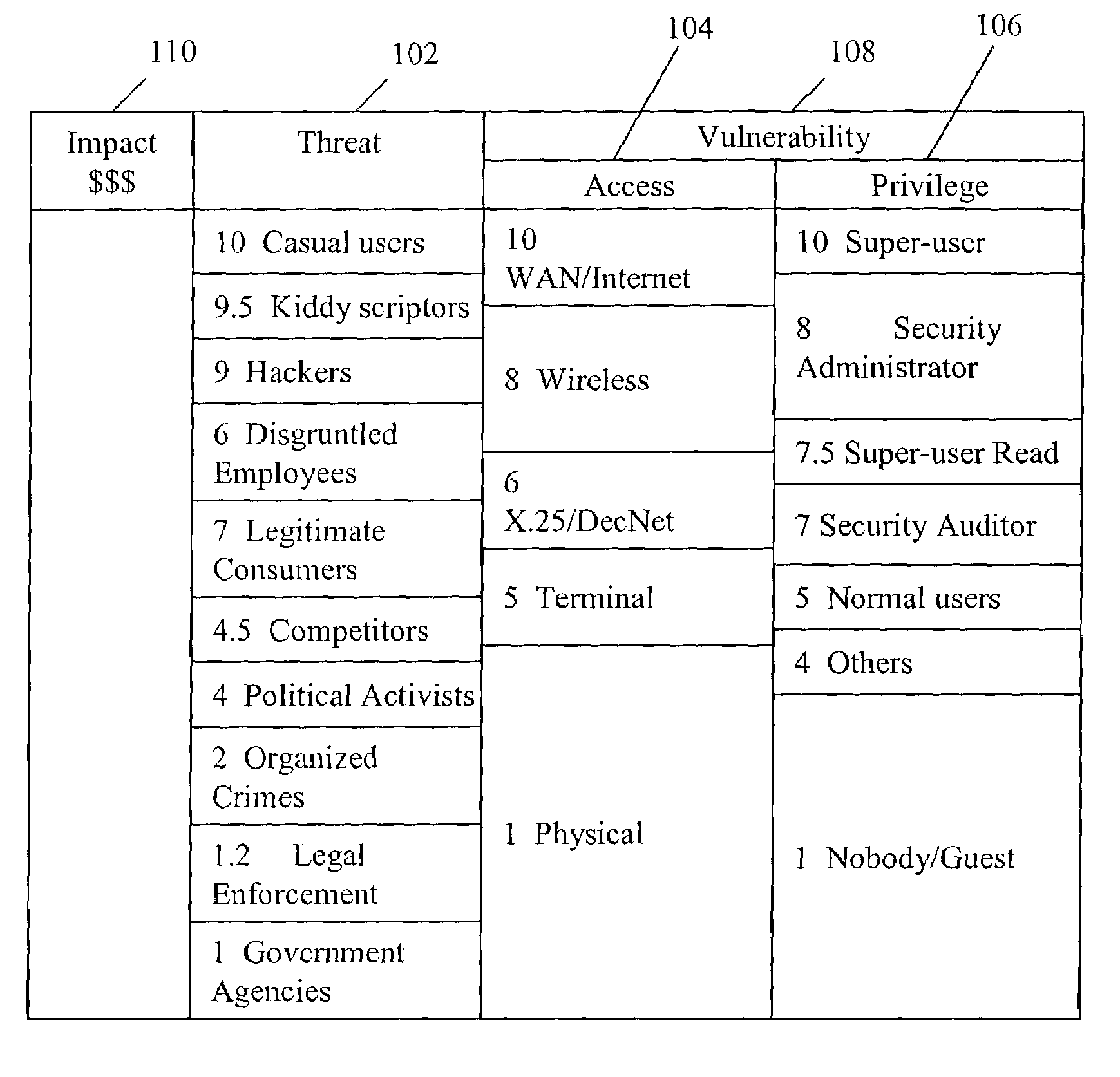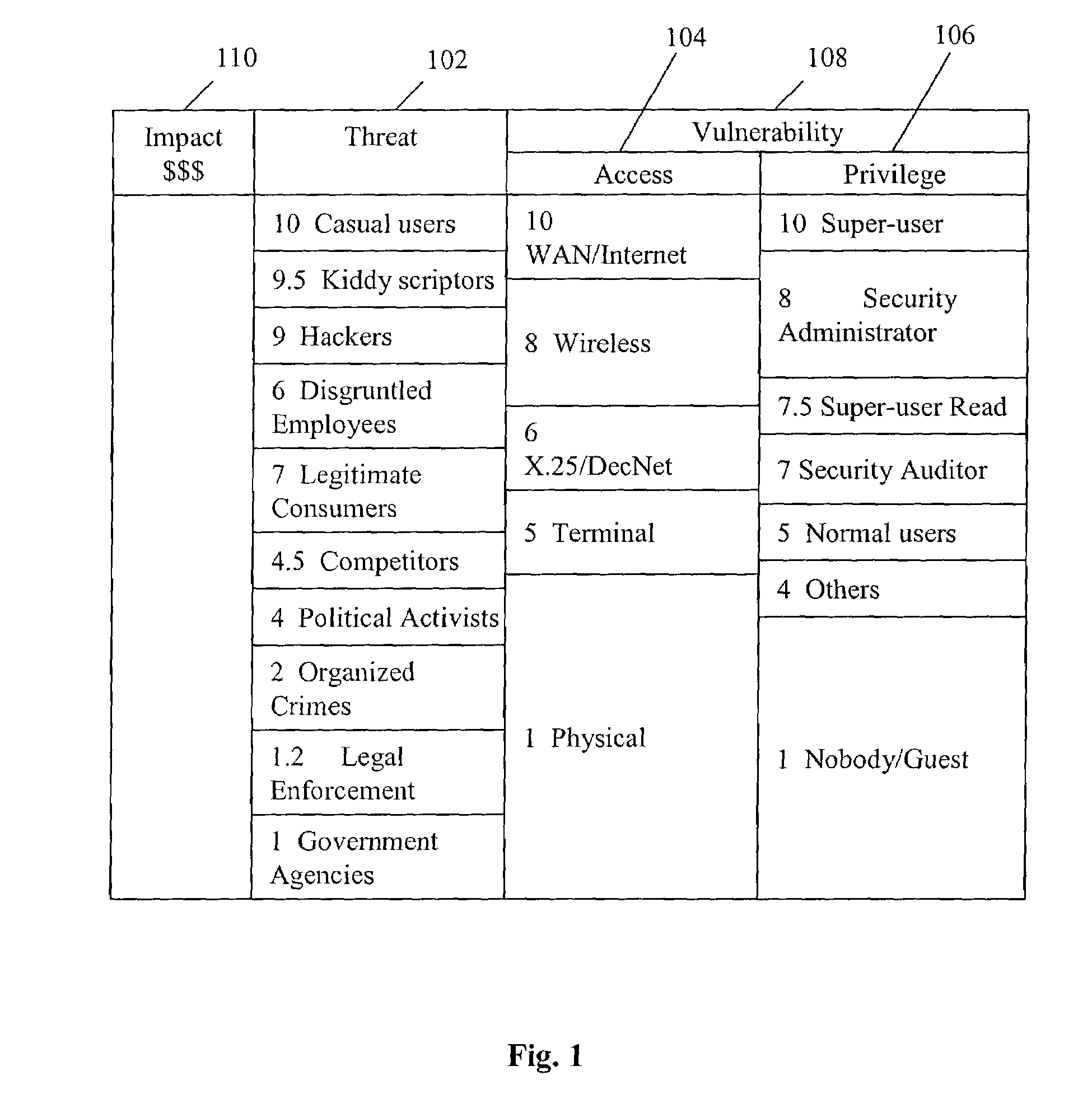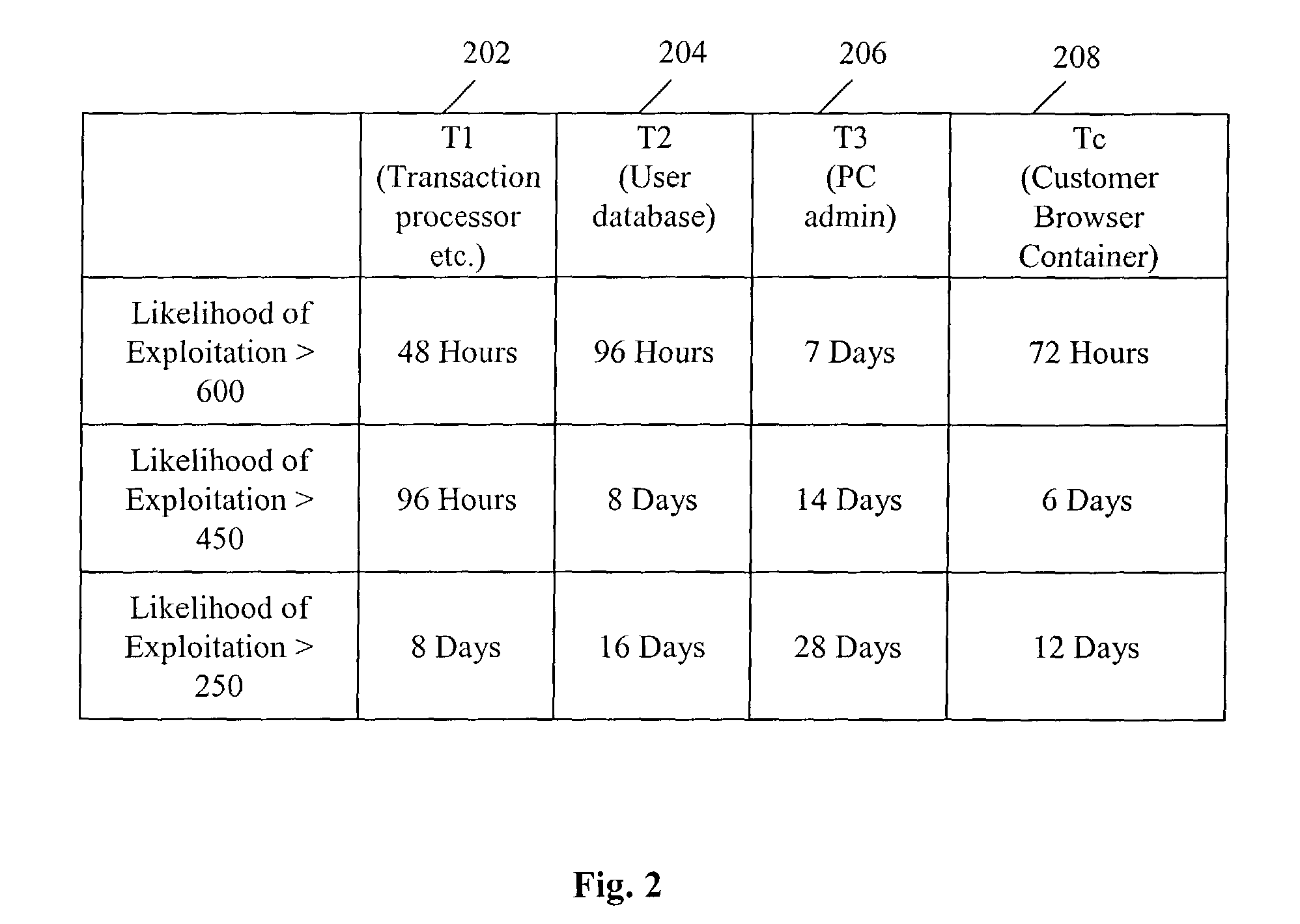Method and system of assessing risk using a one-dimensional risk assessment model
a risk assessment and one-dimensional technology, applied in the field of information system security, can solve the problems of insufficient actuarial statistics to determine the likelihood of exploitation of vulnerabilities, inability to compare a high, medium or low risk in one particular area with a high, medium or low risk in another
- Summary
- Abstract
- Description
- Claims
- Application Information
AI Technical Summary
Benefits of technology
Problems solved by technology
Method used
Image
Examples
Embodiment Construction
[0033]Referring now in detail to an embodiment of the present invention, an example of which is illustrated in the accompanying drawings, the present invention provides a method and system for assessing and quantifying the risk exposure of an information system or application using a one-dimensional quantitative risk assessment model. In particular, the present invention aids companies in conducting information technology security-related risk assessments. To strike a balance between model simplicity and faithful replication of the modeled system, the present invention provides a novel quantitative model combining a one-dimensional risk-assessment approach with expert knowledge to avoid collecting the data of threat and vulnerability and to achieve certain objectives. Thus, the present invention enables the calculation of probabilities or the likelihood of a threat occurring or exploitation without necessarily referring to actuarial information.
[0034]The present invention provides a...
PUM
 Login to View More
Login to View More Abstract
Description
Claims
Application Information
 Login to View More
Login to View More - R&D
- Intellectual Property
- Life Sciences
- Materials
- Tech Scout
- Unparalleled Data Quality
- Higher Quality Content
- 60% Fewer Hallucinations
Browse by: Latest US Patents, China's latest patents, Technical Efficacy Thesaurus, Application Domain, Technology Topic, Popular Technical Reports.
© 2025 PatSnap. All rights reserved.Legal|Privacy policy|Modern Slavery Act Transparency Statement|Sitemap|About US| Contact US: help@patsnap.com



